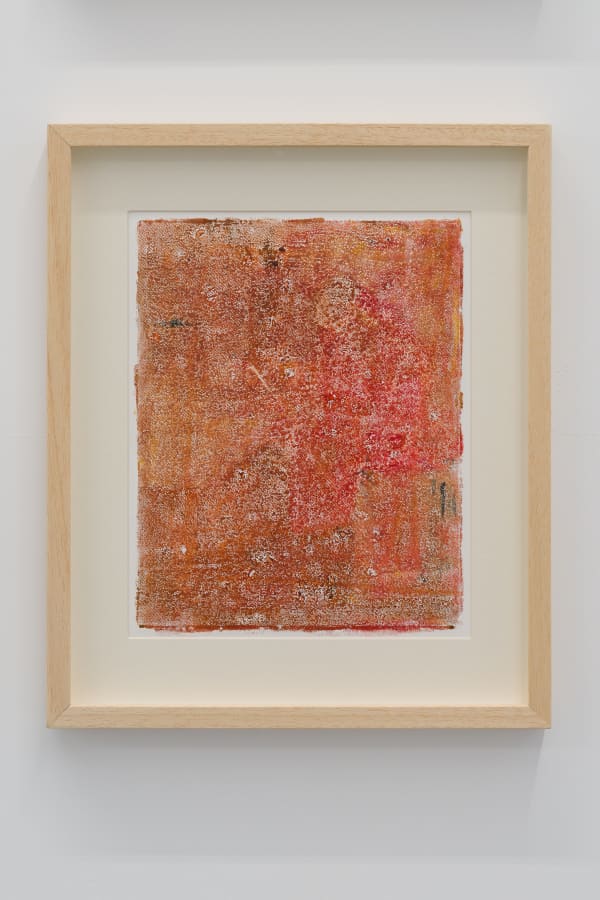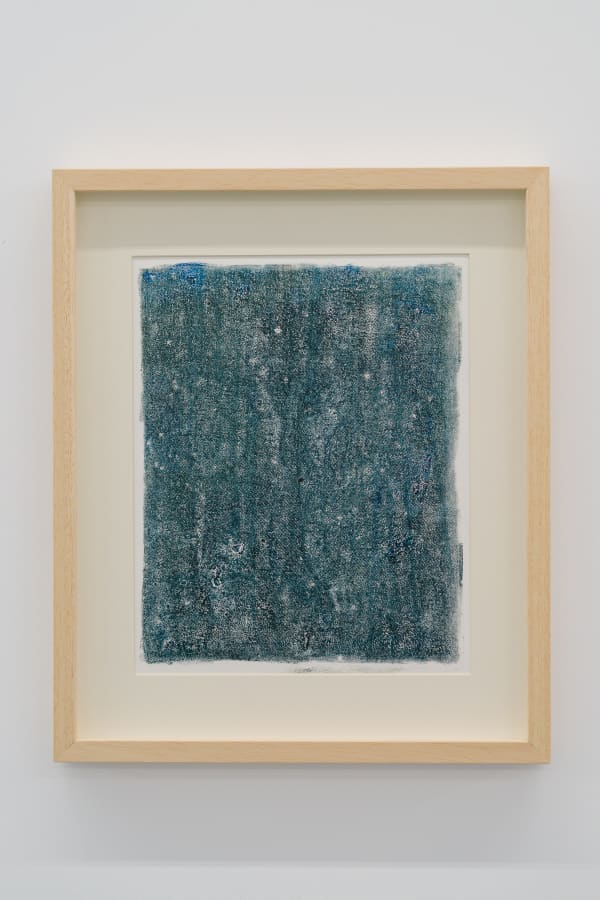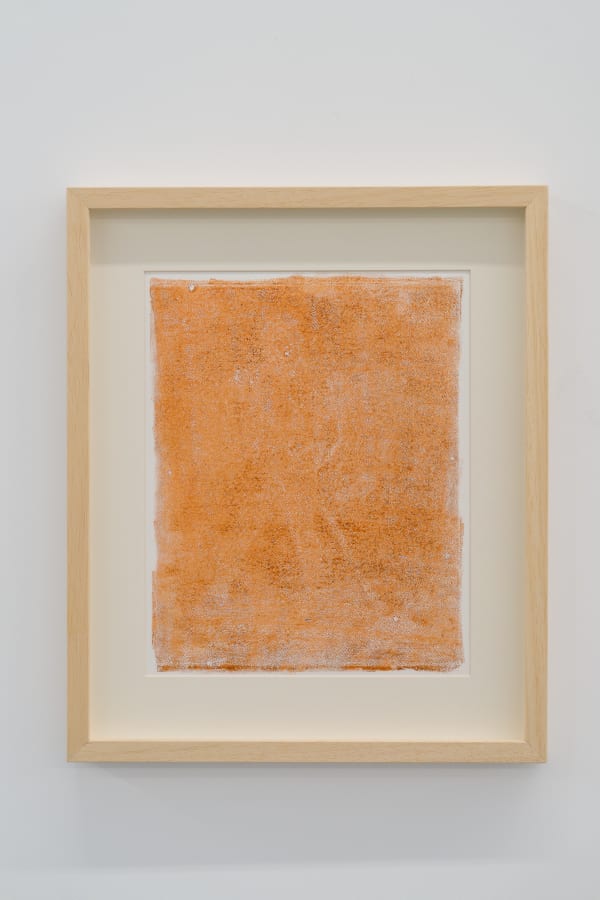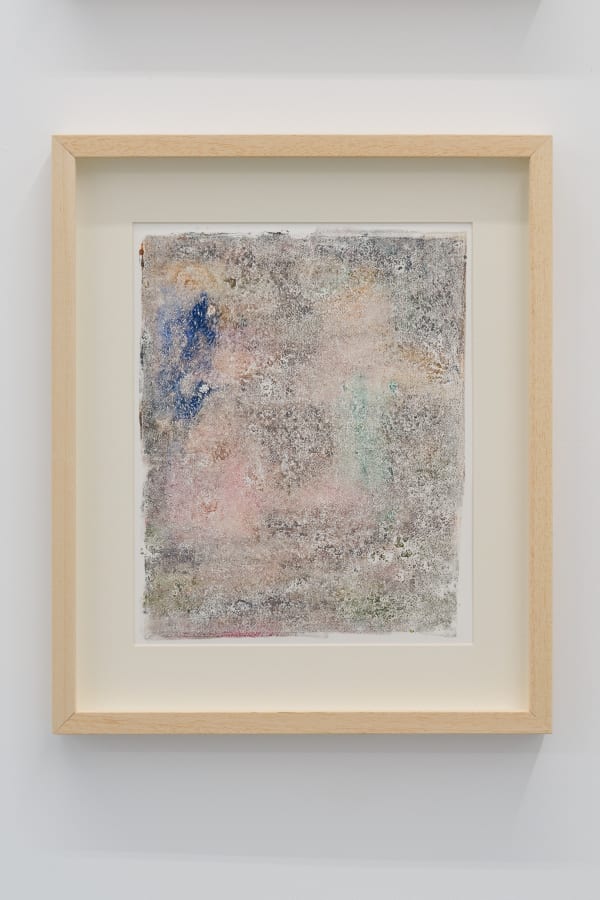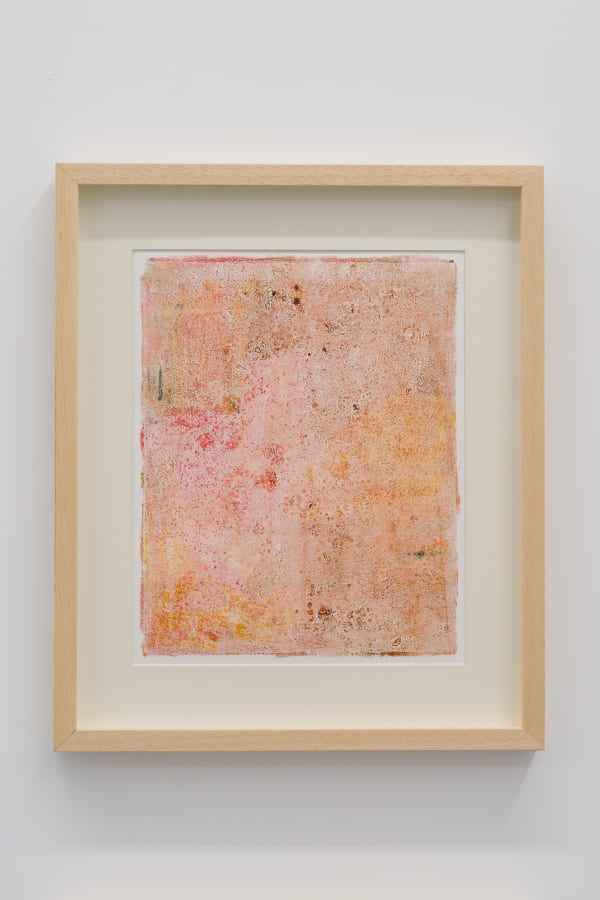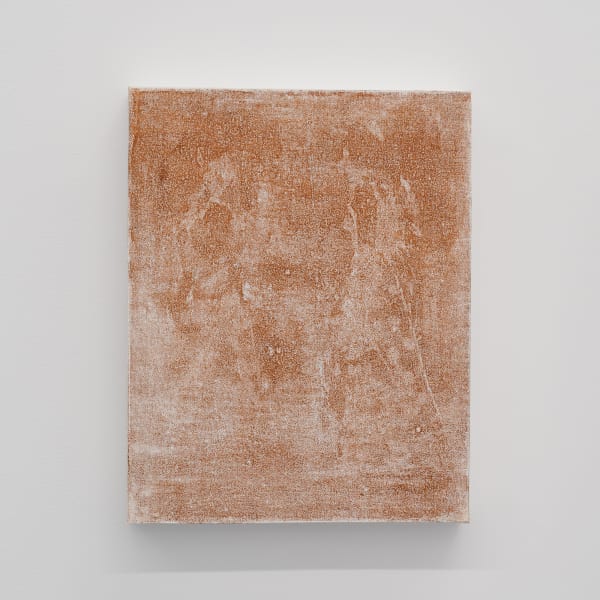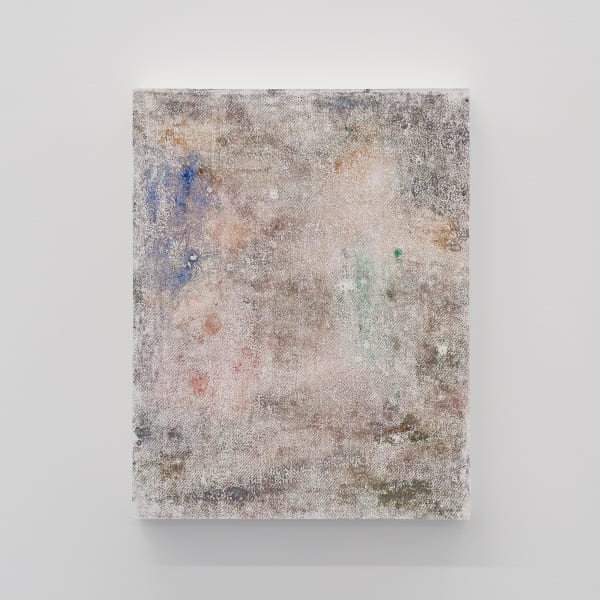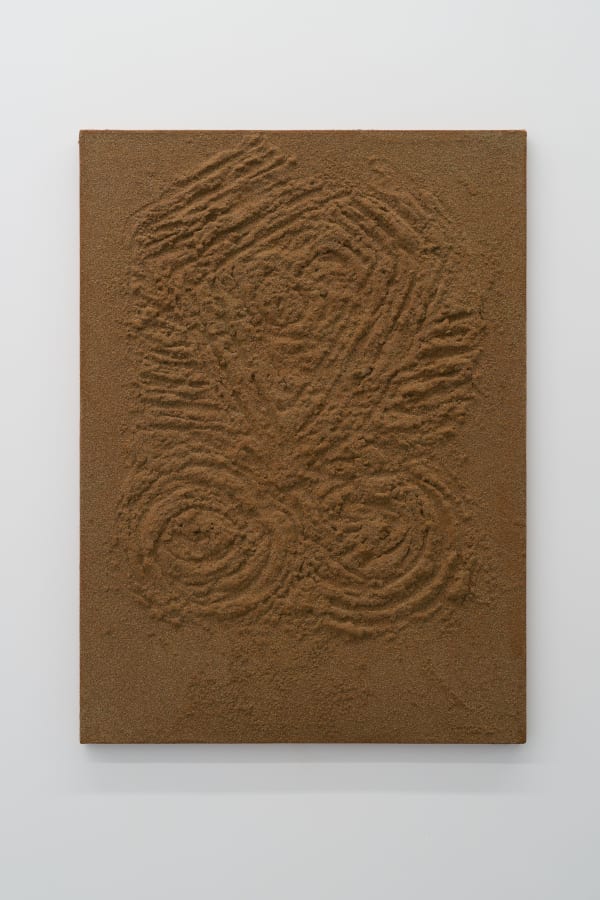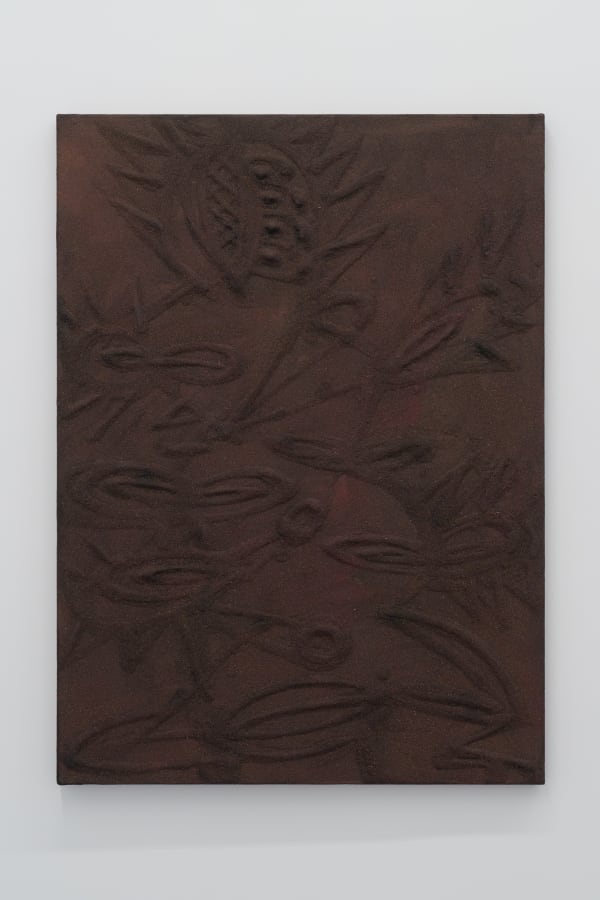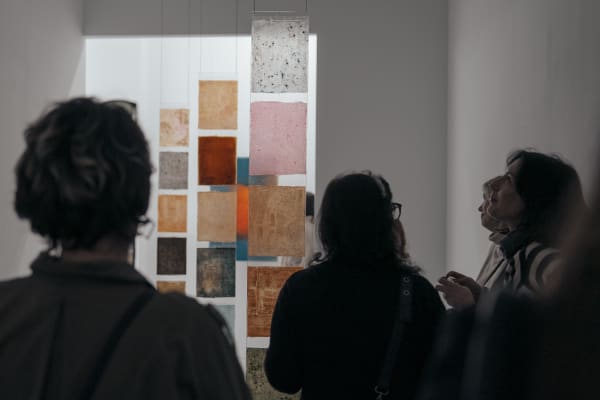Two Gorzo: A duo show by Ioana Gorzo and Dumitru Gorzo
The TWO GORZO Exhibition, a duo-show featuring Ioana Gorzo and Dumitru Gorzo, brings forth a unique dialogue between two seemingly opposing artistic forms. The drawings and paintings of the two communicate and complement each other in a less explored territory when it comes to art, radically addressing issues of imagery, with meanings of representation and the phenomenon of the iconic. Despite appearances, the art of the two aligns on the same side of anti-representation.
The TWO GORZO Exhibition initiates a discussion about drawing and painting that challenges the conventions of art history, bringing things closer to a matter of visual studies, as a fundamental interest in contemporary culture. This alternative perspective on art is often obscured by a retro-modernist understanding of painting as a superior technical form of craftsmanship.
In the case of this duo, in particular, techniques and subjectivity are a "support" and instrument, and the exhibition's proposal is to reflect precisely on this aspect from two seemingly opposing perspectives that come together on the anti-representation realm. On the one hand, for Ioana Gorzo, the image is a cold and objective study, with the represented subject being canceled and replaced by multiple degradations obtained through a non-objective approach. On the other hand, for Dumitru Gorzo, the image is a hot topic, where free form and contour are canceled by materiality and mineral layers through a series of additions. In one case, the image is the trace preserved through a series of eliminations; in the other, it is an accident and surplus.
-
 Ioana GorzoGuardians 1, 2024Oil on paper38 x 32 cm.
Ioana GorzoGuardians 1, 2024Oil on paper38 x 32 cm.
15 x 12 5/8 in. -
 Ioana GorzoGuardians 10, 2024Oil on paper38 x 32 cm.
Ioana GorzoGuardians 10, 2024Oil on paper38 x 32 cm.
15 x 12 5/8 in. -
 Ioana GorzoGuardians 2, 2024Oil on paper38 x 32 cm.
Ioana GorzoGuardians 2, 2024Oil on paper38 x 32 cm.
15 x 12 5/8 in. -
 Ioana GorzoGuardians 3, 2024Oil on paper38 x 32 cm.
Ioana GorzoGuardians 3, 2024Oil on paper38 x 32 cm.
15 x 12 5/8 in. -
 Ioana GorzoGuardians 4, 2024Oil on paper38 x 32 cm.
Ioana GorzoGuardians 4, 2024Oil on paper38 x 32 cm.
15 x 12 5/8 in. -
 Ioana GorzoGuardians 5, 2024Oil on paper38 x 32 cm.
Ioana GorzoGuardians 5, 2024Oil on paper38 x 32 cm.
15 x 12 5/8 in. -
 Ioana GorzoGuardians 6, 2024Oil on paper38 x 32 cm.
Ioana GorzoGuardians 6, 2024Oil on paper38 x 32 cm.
15 x 12 5/8 in. -
 Ioana GorzoGuardians 7, 2024Oil on paper38 x 32 cm.
Ioana GorzoGuardians 7, 2024Oil on paper38 x 32 cm.
15 x 12 5/8 in. -
 Ioana GorzoGuardians 8, 2024Oil on paper38 x 32 cm.
Ioana GorzoGuardians 8, 2024Oil on paper38 x 32 cm.
15 x 12 5/8 in. -
 Ioana GorzoGuardians 9, 2024Oil on paper38 x 32 cm.
Ioana GorzoGuardians 9, 2024Oil on paper38 x 32 cm.
15 x 12 5/8 in. -
 Ioana GorzoHanging Gardens 1, 2022-2024Oil on canvas mounted on wooden panel25 x 20 cm.
Ioana GorzoHanging Gardens 1, 2022-2024Oil on canvas mounted on wooden panel25 x 20 cm.
9 7/8 x 7 7/8 in. -
 Ioana GorzoHanging Gardens 10, 2022-2024Oil on canvas mounted on wooden panel25 x 20 cm.
Ioana GorzoHanging Gardens 10, 2022-2024Oil on canvas mounted on wooden panel25 x 20 cm.
9 7/8 x 7 7/8 in. -
 Ioana GorzoHanging Gardens 11, 2022-2024Oil on canvas mounted on wooden panel25 x 20 cm.
Ioana GorzoHanging Gardens 11, 2022-2024Oil on canvas mounted on wooden panel25 x 20 cm.
9 7/8 x 7 7/8 in. -
 Ioana GorzoHanging Gardens 12, 2022-2024Oil on canvas mounted on wooden panel25 x 20 cm.
Ioana GorzoHanging Gardens 12, 2022-2024Oil on canvas mounted on wooden panel25 x 20 cm.
9 7/8 x 7 7/8 in. -
 Ioana GorzoHanging Gardens 13, 2022-2024Oil on canvas mounted on wooden panel25 x 20 cm.
Ioana GorzoHanging Gardens 13, 2022-2024Oil on canvas mounted on wooden panel25 x 20 cm.
9 7/8 x 7 7/8 in. -
 Ioana GorzoHanging Gardens 14, 2022-2024Oil on canvas mounted on wooden panel25 x 20 cm.
Ioana GorzoHanging Gardens 14, 2022-2024Oil on canvas mounted on wooden panel25 x 20 cm.
9 7/8 x 7 7/8 in. -
 Ioana GorzoHanging Gardens 15, 2022-2024Oil on canvas mounted on wooden panel25 x 20 cm.
Ioana GorzoHanging Gardens 15, 2022-2024Oil on canvas mounted on wooden panel25 x 20 cm.
9 7/8 x 7 7/8 in. -
 Ioana GorzoHanging Gardens 16, 2022-2024Oil on canvas mounted on wooden panel25 x 20 cm.
Ioana GorzoHanging Gardens 16, 2022-2024Oil on canvas mounted on wooden panel25 x 20 cm.
9 7/8 x 7 7/8 in. -
 Ioana GorzoHanging Gardens 17, 2022-2024Oil on canvas mounted on wooden panel25 x 20 cm.
Ioana GorzoHanging Gardens 17, 2022-2024Oil on canvas mounted on wooden panel25 x 20 cm.
9 7/8 x 7 7/8 in. -
 Ioana GorzoHanging Gardens 18, 2022-2024Oil on canvas mounted on wooden panel25 x 20 cm.
Ioana GorzoHanging Gardens 18, 2022-2024Oil on canvas mounted on wooden panel25 x 20 cm.
9 7/8 x 7 7/8 in. -
 Ioana GorzoHanging Gardens 19, 2022-2024Oil on canvas mounted on wooden panel25 x 20 cm.
Ioana GorzoHanging Gardens 19, 2022-2024Oil on canvas mounted on wooden panel25 x 20 cm.
9 7/8 x 7 7/8 in. -
 Ioana GorzoHanging Gardens 2, 2022-2024Oil on canvas mounted on wooden panel25 x 20 cm.
Ioana GorzoHanging Gardens 2, 2022-2024Oil on canvas mounted on wooden panel25 x 20 cm.
9 7/8 x 7 7/8 in. -
 Ioana GorzoHanging Gardens 20, 2022-2024Oil on canvas mounted on wooden panel25 x 20 cm.
Ioana GorzoHanging Gardens 20, 2022-2024Oil on canvas mounted on wooden panel25 x 20 cm.
9 7/8 x 7 7/8 in. -
 Ioana GorzoHanging Gardens 21, 2022-2024Oil on canvas mounted on wooden panel25 x 20 cm.
Ioana GorzoHanging Gardens 21, 2022-2024Oil on canvas mounted on wooden panel25 x 20 cm.
9 7/8 x 7 7/8 in. -
 Ioana GorzoHanging Gardens 22, 2022-2024Oil on canvas mounted on wooden panel25 x 20 cm.
Ioana GorzoHanging Gardens 22, 2022-2024Oil on canvas mounted on wooden panel25 x 20 cm.
9 7/8 x 7 7/8 in. -
 Ioana GorzoHanging Gardens 23, 2022-2024Oil on canvas mounted on wooden panel25 x 20 cm.
Ioana GorzoHanging Gardens 23, 2022-2024Oil on canvas mounted on wooden panel25 x 20 cm.
9 7/8 x 7 7/8 in. -
 Ioana GorzoHanging Gardens 24, 2022-2024Oil on canvas mounted on wooden panel25 x 20 cm.
Ioana GorzoHanging Gardens 24, 2022-2024Oil on canvas mounted on wooden panel25 x 20 cm.
9 7/8 x 7 7/8 in. -
 Ioana GorzoHanging Gardens 3, 2022-2024Oil on canvas mounted on wooden panel25 x 20 cm.
Ioana GorzoHanging Gardens 3, 2022-2024Oil on canvas mounted on wooden panel25 x 20 cm.
9 7/8 x 7 7/8 in. -
 Ioana GorzoHanging Gardens 4, 2022-2024Oil on canvas mounted on wooden panel25 x 20 cm.
Ioana GorzoHanging Gardens 4, 2022-2024Oil on canvas mounted on wooden panel25 x 20 cm.
9 7/8 x 7 7/8 in. -
 Ioana GorzoHanging Gardens 5, 2022-2024Oil on canvas mounted on wooden panel25 x 20 cm.
Ioana GorzoHanging Gardens 5, 2022-2024Oil on canvas mounted on wooden panel25 x 20 cm.
9 7/8 x 7 7/8 in. -
 Ioana GorzoHanging Gardens 6, 2022-2024Oil on canvas mounted on wooden panel25 x 20 cm.
Ioana GorzoHanging Gardens 6, 2022-2024Oil on canvas mounted on wooden panel25 x 20 cm.
9 7/8 x 7 7/8 in. -
 Ioana GorzoHanging Gardens 7, 2022-2024Oil on canvas mounted on wooden panel25 x 20 cm.
Ioana GorzoHanging Gardens 7, 2022-2024Oil on canvas mounted on wooden panel25 x 20 cm.
9 7/8 x 7 7/8 in. -
 Ioana GorzoHanging Gardens 8, 2022-2024Oil on canvas mounted on wooden panel25 x 20 cm.
Ioana GorzoHanging Gardens 8, 2022-2024Oil on canvas mounted on wooden panel25 x 20 cm.
9 7/8 x 7 7/8 in. -
 Ioana GorzoHanging Gardens 9, 2022-2024Oil on canvas mounted on wooden panel25 x 20 cm.
Ioana GorzoHanging Gardens 9, 2022-2024Oil on canvas mounted on wooden panel25 x 20 cm.
9 7/8 x 7 7/8 in. -
 Ioana GorzoNoise, 2024Oil on acetophan mounted on plexiglass155 x 105 cm.
Ioana GorzoNoise, 2024Oil on acetophan mounted on plexiglass155 x 105 cm.
61 x 41 3/8 in. -
 Ioana GorzoQuiet, 2024Oil on acetophan mounted on plexiglass155 x 105 cm.
Ioana GorzoQuiet, 2024Oil on acetophan mounted on plexiglass155 x 105 cm.
61 x 41 3/8 in. -
 Ioana GorzoSunrise, 2024Oil on acetophan mounted on plexiglass105 x 70 cm.
Ioana GorzoSunrise, 2024Oil on acetophan mounted on plexiglass105 x 70 cm.
41 3/8 x 27 1/2 in. -
 Dumitru GorzoSac 2, 2024Jute, fibreglass, resin, plaster, pigments, sand111 x 71 cm.
Dumitru GorzoSac 2, 2024Jute, fibreglass, resin, plaster, pigments, sand111 x 71 cm.
43 3/4 x 28 in. -
 Dumitru GorzoNew Painting XI, 2024Acrylic resin, pigments, sand on canvas140 x 98 cm.
Dumitru GorzoNew Painting XI, 2024Acrylic resin, pigments, sand on canvas140 x 98 cm.
55 1/8 x 38 5/8 in. -
 Dumitru GorzoNew Painting IV, 2024Acrylic resin, pigments, sand on canvas140 x 98 cm.
Dumitru GorzoNew Painting IV, 2024Acrylic resin, pigments, sand on canvas140 x 98 cm.
55 1/8 x 38 5/8 in. -
 Dumitru GorzoNew Painting V, 2024Acrylic resin, pigment, sawdust and sand on canvas110 x 80 cm.
Dumitru GorzoNew Painting V, 2024Acrylic resin, pigment, sawdust and sand on canvas110 x 80 cm.
43 1/4 x 31 1/2 in. -
 Dumitru GorzoNew Painting III, 2024Acrylic resin, pigment, sawdust and sand on canvas110 x 80 cm.
Dumitru GorzoNew Painting III, 2024Acrylic resin, pigment, sawdust and sand on canvas110 x 80 cm.
43 1/4 x 31 1/2 in. -
 Dumitru GorzoNew Painting IX, 2024Acrylic resin, pigments, sand on canvas110 x 80 cm.
Dumitru GorzoNew Painting IX, 2024Acrylic resin, pigments, sand on canvas110 x 80 cm.
43 1/4 x 31 1/2 in. -
 Dumitru GorzoNew Painting VI, 2024Acrylic, pigments, resin, sand on canvas110 x 80 cm.
Dumitru GorzoNew Painting VI, 2024Acrylic, pigments, resin, sand on canvas110 x 80 cm.
43 1/4 x 31 1/2 in. -
 Dumitru GorzoNew Painting II, 2024Acrylic resin, pigments, sand on canvas140 x 98 cm.
Dumitru GorzoNew Painting II, 2024Acrylic resin, pigments, sand on canvas140 x 98 cm.
55 1/8 x 38 5/8 in. -
 Dumitru GorzoNew Painting 1, 2024Acrylic resin, pigments, sand on canvas110 x 80 cm.
Dumitru GorzoNew Painting 1, 2024Acrylic resin, pigments, sand on canvas110 x 80 cm.
43 1/4 x 31 1/2 in.
-
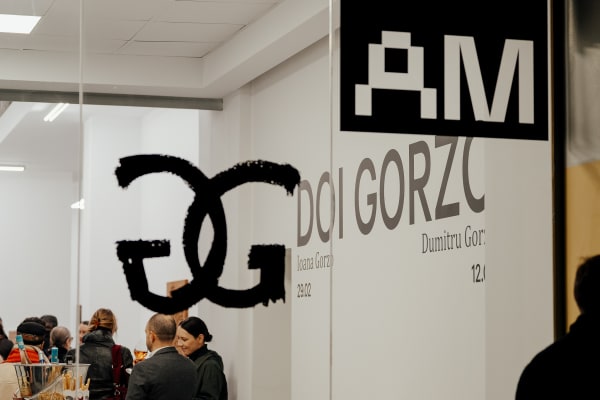
Two Gorzo featured in Artviewer.net
April 1, 2024We are pleased to announce that the exhibition TWO GORZO has been selected to be featured in Artviewer. The TWO GORZO Exhibition, a duo-show featuring...Read more -

Two Gorzo featured in Contemporary Art Issue
March 8, 2024We are pleased to announce that the exhibition TWO GORZO has been selected to be featured in Artviewer. A brand-new show at Arsmonitor in Bucharest...Read more
-
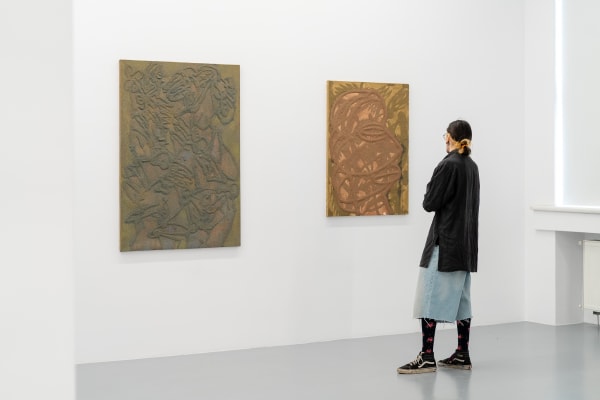
Two Gorzo at RFI/Zebra, Mihaela Dedeoglu
March 7, 2024 Read more -
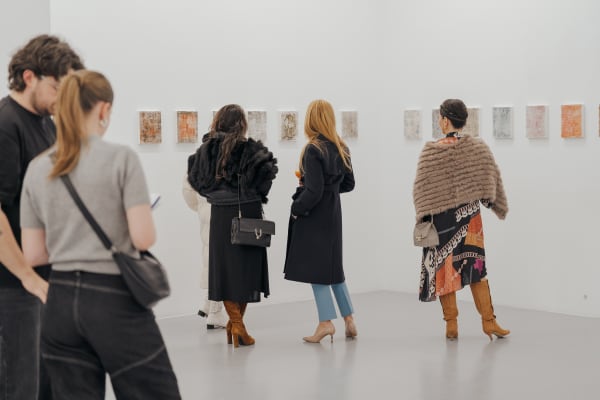
Two Gorzo press release in Observator Cultural
A premiere exhibition at Arsmonitor: Ioana Gorzo and Dumitru Gorzo are exhibiting together for the first time February 29, 2024As it has accustomed its audience, the newest art gallery in Bucharest, located in Casa Presei Libere, Arsmonitor, announces a special exhibition event. The exhibition...Read more
-
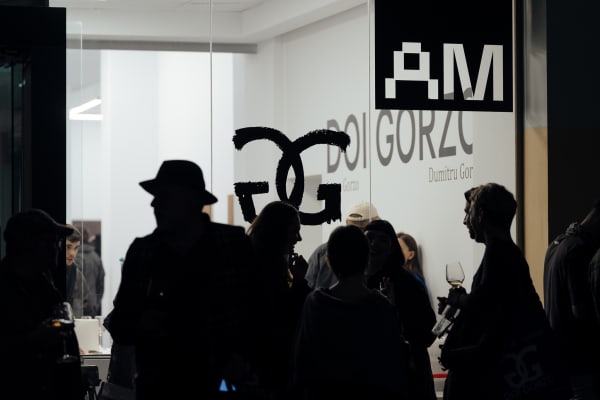
Two Gorzo press release in Business Review
A premiere exhibition at Arsmonitor: Ioana Gorzo and Dumitru Gorzo exhibit for the first time together February 28, 2024As the public has become accustomed to, the newest art gallery in Bucharest opened in the Casa Presei Libere, Arsmonitor, announces a special exhibition event....Read more -

Two Gorzo press release in E-Zeppelin
Two Gorzo at Arsmonitor: Ioana Gorzo and Dumitru Gorzo Exhibit Together for the First Time February 27, 2024The Arsmonitor art gallery will open the exhibition DOI GORZO on Thursday, February 29, at 6 PM, marking a first-time collaboration between Ioana Gorzo and...Read more
-
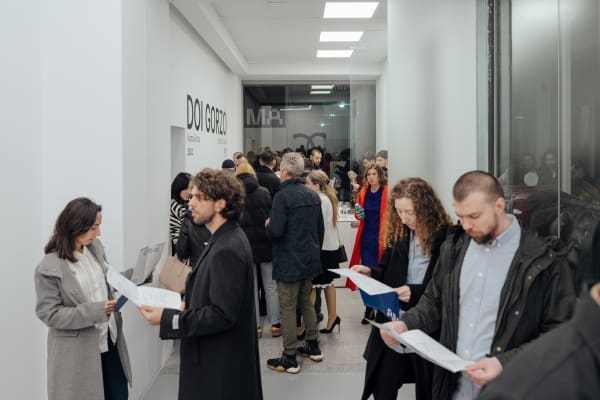
Two Gorzo press release in Revista BIZ
A premiere exhibition at Arsmonitor: Ioana Gorzo and Dumitru Gorzo are exhibiting together for the first time February 26, 2024The exhibition DOI GORZO, a duo-show featuring Ioana Gorzo and Dumitru Gorzo, continues the current year's curatorial program at the Arsmonitor gallery. The opening will...Read more -
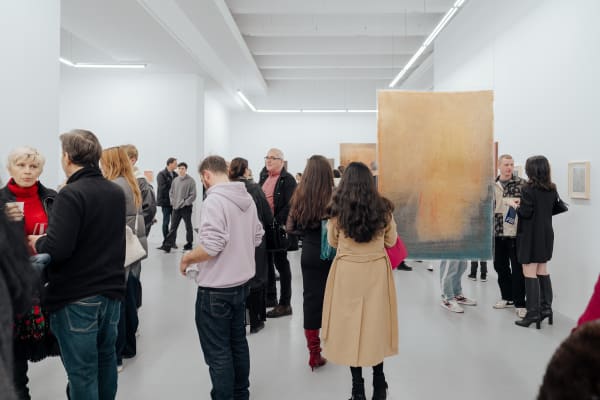
Two Gorzo press release in Zile și Nopți
A premiere exhibition at Arsmonitor: Ioana Gorzo and Dumitru Gorzo are exhibiting together for the first time February 26, 2024As it has accustomed its audience, Arsmonitor, the newest art gallery in Bucharest located in Casa Presei Libere, announces a special exhibition event. The exhibition...Read more
-

Two Gorzo in URBAN
Ioana Gorzo and Dumitru Gorzo are exhibiting together for the first time. The opening will take place on Thursday at the Arsmonitor gallery February 26, 2024 Read more -

Two Gorzo press release in Radio Romania Cultural
A premiere exhibition at Arsmonitor: Ioana Gorzo and Dumitru Gorzo are exhibiting together for the first time February 24, 2024Ioana and Dumitru Gorzo are exhibiting together in Bucharest for the first time from February 29 to April 12. The exhibition TWO GORZO continues the...Read more
-

e-flux: First Aniversary
Celebrating a year of artistic exploration and collaboratione-flux.com, September 11, 2024 -
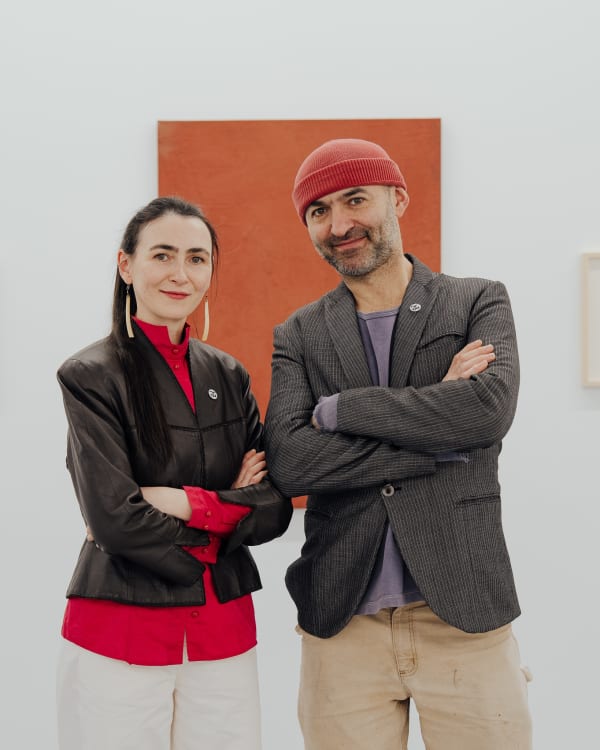
Observator Cultural: Self-building exercises with Ioana Gorzo and Dumitru Gorzo
Interview with Ioana and Dumitru about their exhibition Two GorzoSilvia Dumitrache, Observator Cultural, April 8, 2024



